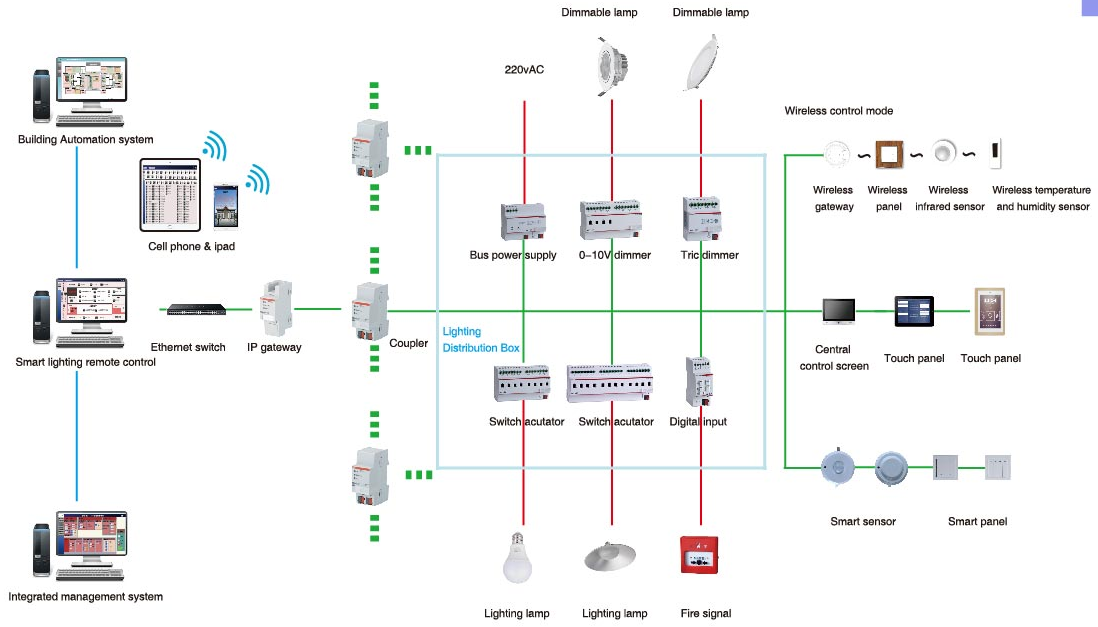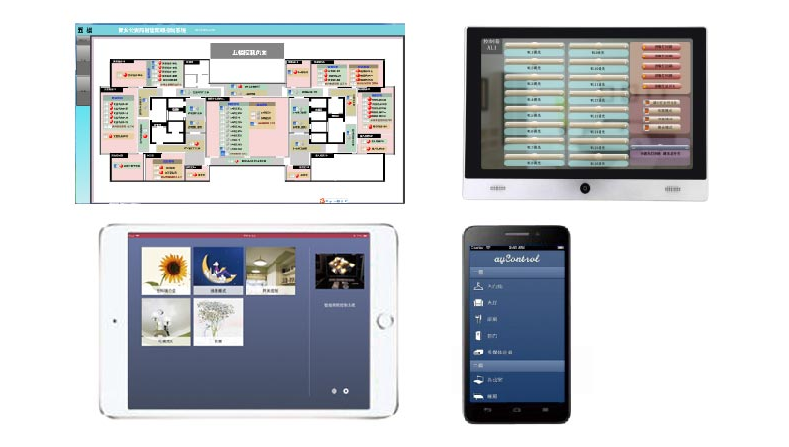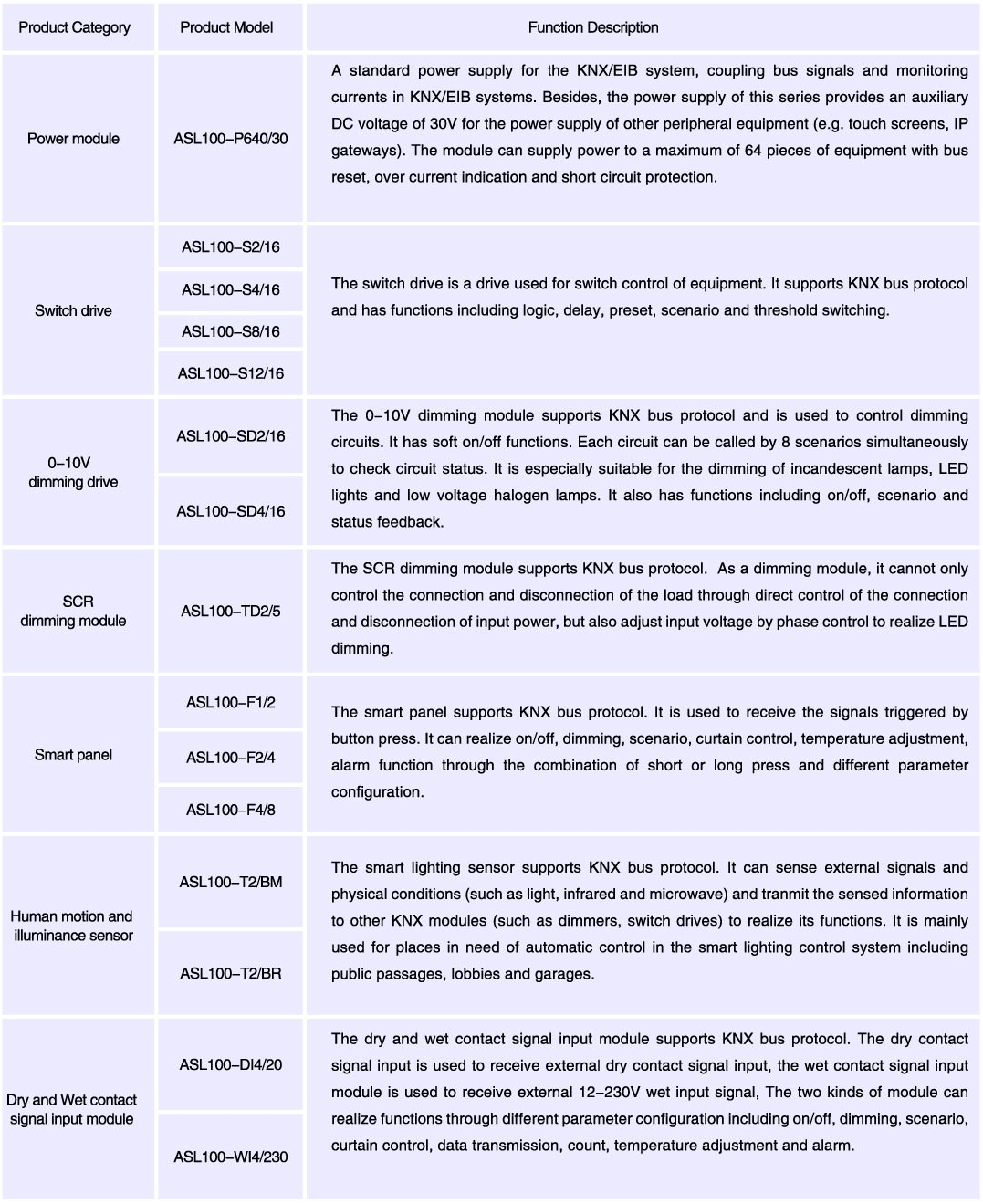

1. Overview
Based on KNX bus technology, Acrel-Bus smart lighting control system originates from Europe and develops from the three bus control technologies for residences and buildings including EIB, Batibus and EHS, of which EIB (European Installation Bus) is the agent technology. It uses the dual-core shielded twisted pair as the bus cable to connect all control modules for system control.
The system can integrate various independent control functions and combine many advantages including comfort, flexibility, safety, energy conservation, economy, easy maintenance into one system. It is mainly used for the control areas of large pubic construction projects including residences and buildings.
2. Application
1) computer room
2) office buildings
3) factory building
4) home
5) Landscape lighting
6) hotel
7) stations and metros
8) airports
9) bridges and tunnels
10) hospitals
11) schools
12) shopping malls
13) sports stadiums
14) exhibition venues
15) residential communities
3. Structure

1) In the Acrel-bus smart lighting control system, all equipment is interconnected by the bus cables.
2) The modules to be installed in the distribution box mainly include: bus power, switch drive, dimming drive, IP gateway, coupler, dry contact input module, time module. These modules are installed via 35mm standard guide rail.
3) The modules needed to be installed on the control site mainly include sensors, panels and touch screens. Sensors as automatic control sensing modules are embedded in the ceilings of passages. The panels and touch screens as the main carriers of manual control shall be installed via 86 box in control sites including duty rooms.
4) Control on central control end: for relatively small projects, 10 inch central control display is available. It direclty connects the system via bus cables without IP gateway to convert protocals. It is easy for setting and low in costs. For relatively large projects, the network cable from the IP gateway is connected to computers where control software is installed to realize remote terminal control.
5) External routers will send wireless signals so the control can also be realized on mobile end including phones and tablets.
4. Main Functions

Manual control: smart panels and touchscreens installed in all areas can realize realtime control of light on/off and brightness according to actual needs.
Auto control: sensors of different functions (e.g. illuminance transducers and human motion sensors) can realize automatic control of light based on external environment.
Scenario control:different scenarios can be preset for switching between them.
Time control:the system will automatically complete the light control according to the preset operation time to ensure minimum energy consumption in idle period.
Central control:for all controls, real time monitoring and effective control of the entire lighting area can be realized. It facilitates the control modes and saves labor and power.
Status feedback: the system can give feedbacks on the on/off function of lighting fixtures on the site.
System linkage:the lighting system can form system linkage with the property management system, the building automation system and the security &fire system.
5. Product Selection
